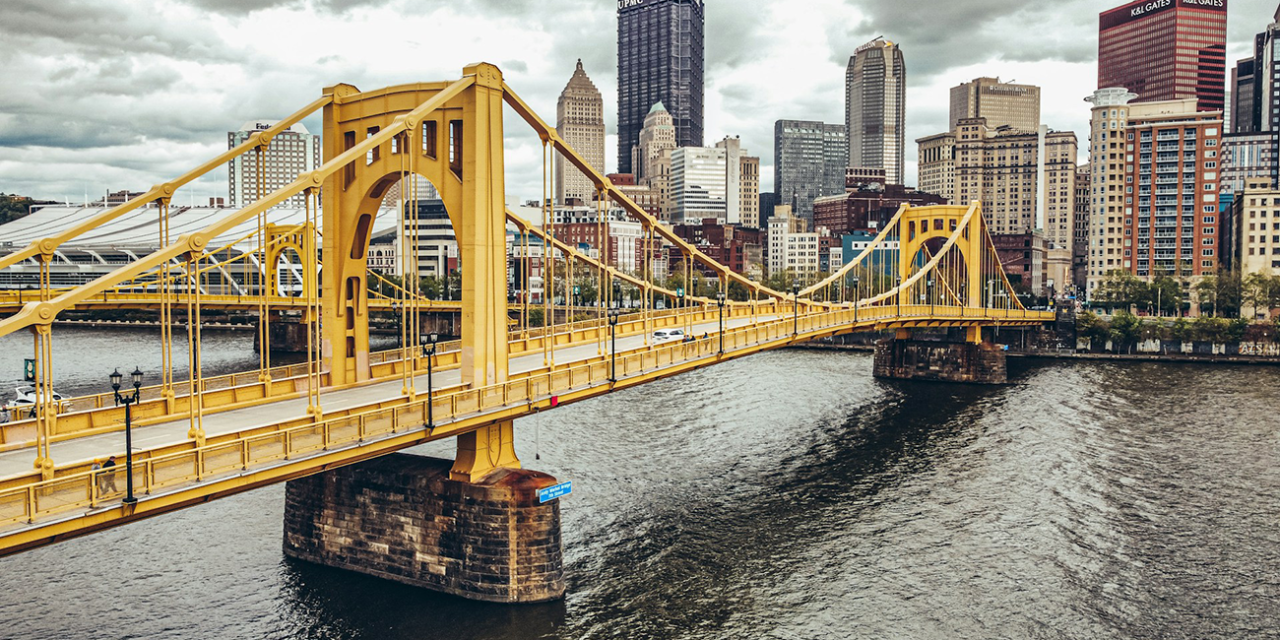The state of Pennsylvania has a rich history that spans from its early Indigenous inhabitants through its role in the founding of the United States to its current status as a significant cultural and economic hub.
From its early colonial days to its industrial boom, Pennsylvania’s history is marked by significant events and developments.
Below, we explore Pennsylvania’s fascinating history, covering its foundation, key historical events, and notable landmarks.
Table of Contents
Early History
Indigenous Inhabitants and European Exploration
Before European settlers arrived, Pennsylvania was home to various Native American tribes, including the Lenape, Susquehannock, and Iroquois.
- Europeans were the first ones to explore the area in the early 1600s and the Dutch and Swedish established settlements in the Delaware Valley.
- In 1681, King Charles II of the country of England granted William Penn a charter for land that would become Pennsylvania, named in honor of Penn’s father.
William Penn’s vision for Pennsylvania was a place of religious freedom and tolerance, attracting diverse groups of settlers.
Colonial Period
Pennsylvania played a crucial role in the colonial era and the American Revolution.
- Philadelphia, founded by William Penn, became a central meeting place for the Founding Fathers.
- Philadelphia was the birthplace of American independence, and the Declaration of Independence and the very important U.S. Constitution were signed there.
The colony’s early economy was based on agriculture, but it soon diversified into manufacturing and trade.
Founding and Early Growth
William Penn’s “Holy Experiment” aimed to establish a colony based on religious tolerance and democratic principles.
- The city of Philadelphia was planned with wide streets and public spaces, setting a precedent for urban design in America.
- The colony attracted Quakers, Mennonites, Amish, and other religious groups seeking freedom from persecution.
By the mid-18th century, Pennsylvania was one of the most prosperous and populous colonies.
19th Century Development
Industrial Growth
The 19th century saw significant industrial growth in Pennsylvania, transforming it into a major economic powerhouse.
- The discovery of coal in the state fueled the rise of the steel industry, particularly in Pittsburgh.
- Pennsylvania also became a leader in oil production in 1859, when the first commercial oil well was drilled in Titusville.
This industrial boom attracted many immigrants, contributing to the state’s cultural diversity.
Transportation and Innovation
Pennsylvania was a hub of transportation and industrial innovation during the 19th century.
- The Pennsylvania Railroad, established in 1846, became one of the world’s largest and most powerful railroad companies.
- The state was also home to significant technological advancements, including developing the Baldwin Locomotive Works.
These developments helped Pennsylvania become a national leader in industry and commerce.
The Civil War and Social Changes
Pennsylvania was a key battleground during the Civil War, with the Battle of Gettysburg being one of the conflict’s most pivotal encounters.
- The state’s resources and manufacturing capacity were crucial to the Union war effort.
- Post-war, Pennsylvania continued to grow, becoming a center for education and innovation.
Institutions like the University of Pennsylvania expanded, and the state saw advances in technology and infrastructure.
20th Century and Modern Era
Economic Shifts and Cultural Developments
The 20th century brought economic changes and cultural developments to Pennsylvania.
- The steel industry’s decline in the late 20th century led to economic challenges, but the state diversified its economy into sectors like healthcare, education, and technology.
- Cities like Philadelphia and Pittsburgh became cultural hubs known for their museums, universities, and vibrant arts scenes.
Modern Pennsylvania is known for its historical landmarks, educational institutions, and contributions to the arts and sciences.
Environmental and Historical Preservation
Efforts to preserve Pennsylvania’s rich history and natural beauty have been ongoing.
- The state has numerous national parks, historic sites, and cultural institutions, such as Independence National Historical Park and Gettysburg National Military Park.
- Organizations such as the Pennsylvania Historical and the hard-working Museum Commission work to protect the state’s heritage.
These preservation efforts ensure that Pennsylvania’s history remains accessible and appreciated by future generations.
Notable Landmarks
Independence Hall
Independence Hall in Philadelphia is where the illustrious Declaration of Independence and the important U.S. Constitution were debated and adopted.
- It is one of the UNESCO World Heritage Sites, giving us a symbolism of American freedom and democracy.
Visitors can visit this wonderful historic site and learn about the foundational moments of the United States.
Gettysburg National Military Park
The site of the Battle of Gettysburg, this park preserves the history of one of the most significant battles of the Civil War.
- It includes numerous monuments, a museum, and preserved battlefields.
Gettysburg is a poignant reminder of the sacrifices made during the Civil War and the importance of preserving history.
The Hershey Story
Milton Hershey transformed the town of Hershey, Pennsylvania, into a model community.
- The Hershey Chocolate Company, founded in 1894, became one of the world’s leading chocolate manufacturers.
- Hershey built a community with schools, parks, and cultural institutions, reflecting his commitment to social welfare.
Hershey’s legacy continues to influence the town and the broader confectionery industry.
The Pennsylvania State Capitol
The Pennsylvania State Capitol is a stunning example of American Renaissance architecture in Harrisburg.
- Completed in 1906, it features murals, sculptures, and stained glass that depict the state’s history and achievements.
- The building is an active center of state government and a historical landmark.
The State Capitol symbolizes Pennsylvania’s political and cultural heritage.
Governance
State Government
Pennsylvania operates under a constitution that has been amended several times since its original adoption in 1776.
- The state government consists of the Executive, Legislative, and Judicial branches.
- The governor, currently Josh Shapiro, serves as the head of the executive branch.
The state government works to address the needs of its diverse population and manage its resources effectively.
Local Government
Pennsylvania’s local government structure includes counties, municipalities, townships, and school districts.
- Each level of government has specific responsibilities for services such as education, public safety, and infrastructure.
- Local governance ensures that the diverse needs of Pennsylvania’s communities are met.
Effective local governance contributes to the overall well-being of the state’s residents.
Demographics and Growth
Population
Pennsylvania has a diverse and growing population.
- As of the 2022 census, the population was 12.97 million, making it one of the most populous states in the U.S.
- The state’s demographic makeup reflects its rich history of immigration and cultural diversity.
Diverse demographics and steady growth reflect Pennsylvania’s appeal as a place to live and work.
Education and Economy
Pennsylvania is home to some of the nation’s top educational institutions, including the University of Pennsylvania and Carnegie Mellon University.
- The state’s economy has diversified into healthcare, education, technology, and finance sectors.
- Pennsylvania continues to be a leader in higher education and research.
These factors contribute to the state’s economic resilience and cultural vibrancy.
State of Pennsylvania Q&A
Q: When was Pennsylvania founded?
A: Pennsylvania was founded in 1681 when the illustrious King Charles II of England granted the historical William Penn a charter for land. The colony was named Pennsylvania, meaning “Penn’s Woods,” in honor of Penn’s father.
Q: Who were the original inhabitants of Pennsylvania?
A: The original inhabitants of Pennsylvania were various Native American tribes, including the Lenape, Susquehannock, and Iroquois. These tribes had established societies and cultures long before European settlers arrived.
Q: What role did Pennsylvania play in the American Revolution?
A: Pennsylvania played a big and integral part in the American Revolution, with Philadelphia as a central meeting place for the Founding Fathers. Both the Declaration of Independence and our country’s U.S. Constitution were signed in Philadelphia.
Q: How did Pennsylvania’s economy evolve in the 19th century?
A: The 19th century saw significant industrial growth in Pennsylvania, transforming it into a major economic powerhouse. The discovery of coal and the rise of the steel and oil industries fueled this growth.
Q: What significant changes occurred in Pennsylvania post-World War II?
A: Post-World War II, Pennsylvania saw economic shifts with the steel industry’s decline, leading to diversification into sectors such as healthcare, education, and technology. Cities like Philadelphia and Pittsburgh became cultural hubs.
Q: What are some notable historical landmarks in Pennsylvania?
A: Notable landmarks include Independence Hall, Gettysburg National Military Park, The Hershey Story, and the Pennsylvania State Capitol. These sites highlight the state’s historical and cultural significance.
Q: How is Pennsylvania governed?
A: Pennsylvania operates under a constitution with an Executive, Legislative, and Judicial branch. The governor serves as the direct head of the executive branch, and counties, municipalities, townships, and school districts manage local governance.
Q: What is the current population of Pennsylvania?
A: Pennsylvania’s population was over 12.97 million as of the 2022 census. The state continues to attract residents with its diverse culture, educational opportunities, and economic resilience.
Pennsylvania’s rich history and continuous development make it a vibrant and thriving state.
By preserving its historical landmarks and investing in future growth, Pennsylvania continues to honor its past while looking forward to continued growth and development.





